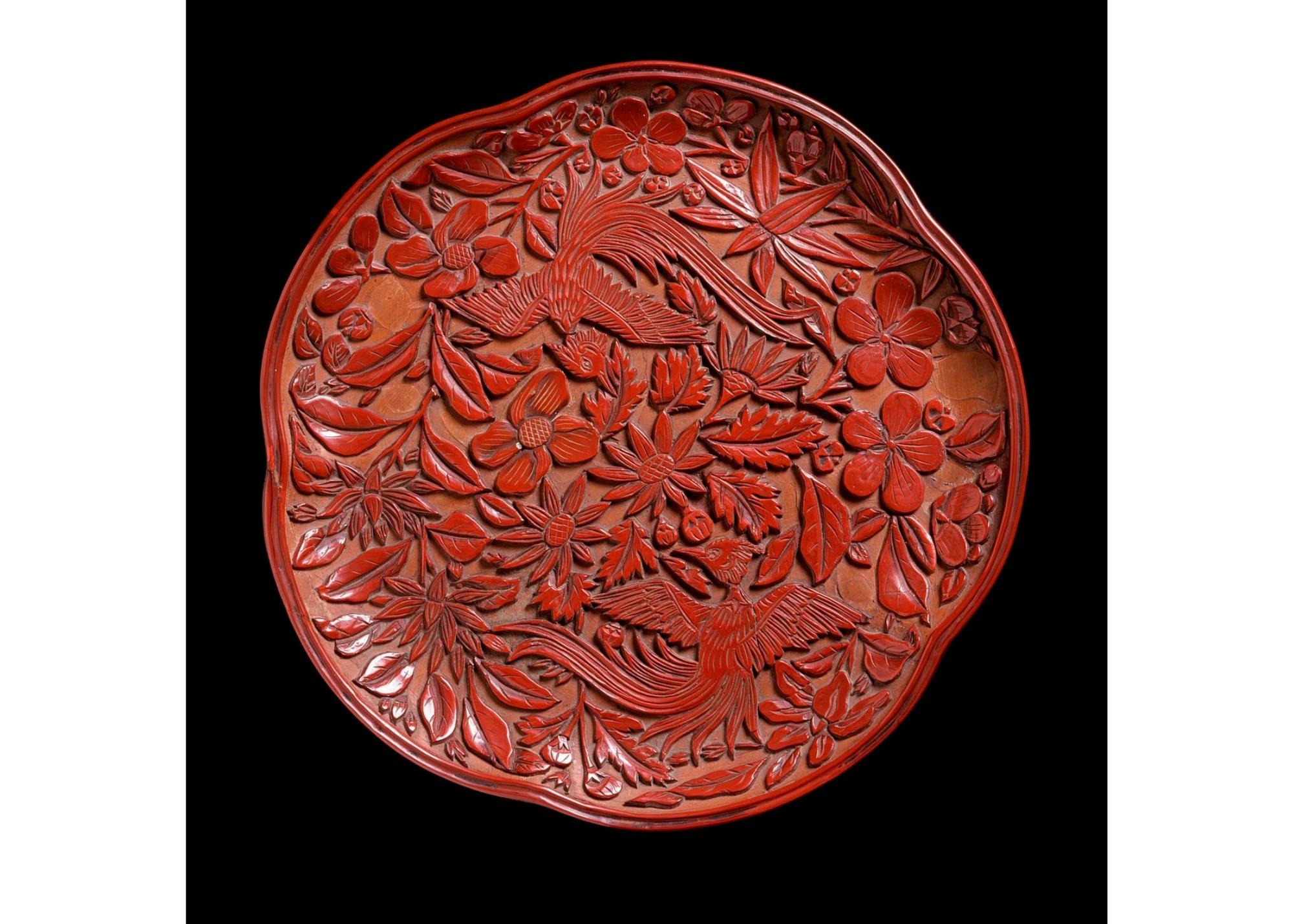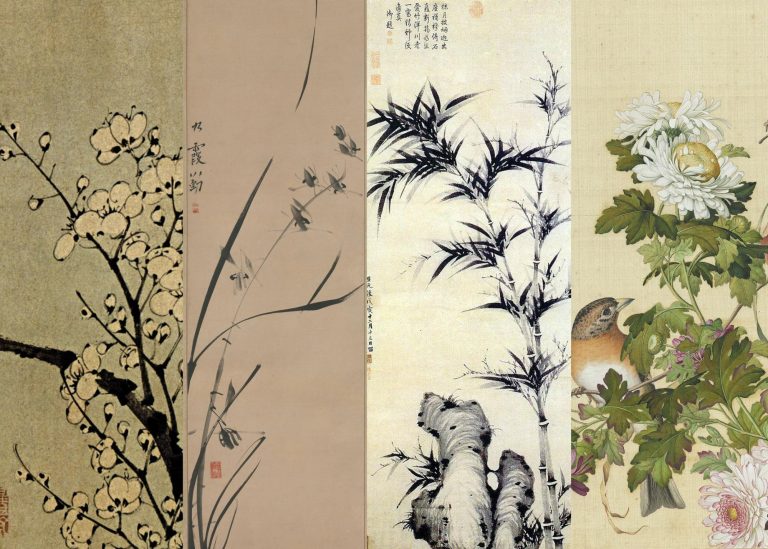In ancient China, a place where self-cultivation and virtue were considered noble pursuits, four gentlemen served as role models for good character. Embodied by botanical identities, four common plants symbolized virtues like modesty, fortitude, righteousness and spirituality.
Also known as the Four Noble Ones, the four gentlemen (四君子 Sì Jūnzǐ) refer to the plum blossom, orchid, bamboo and chrysanthemum. These four plants, with their natural characteristics, represent the qualities of a Confucian gentleman or Junzi. They often appear in Chinese works of art, including paintings, poetry and ceramics.
The plum blossom (梅花 Méihuā) – perseverance and fortitude
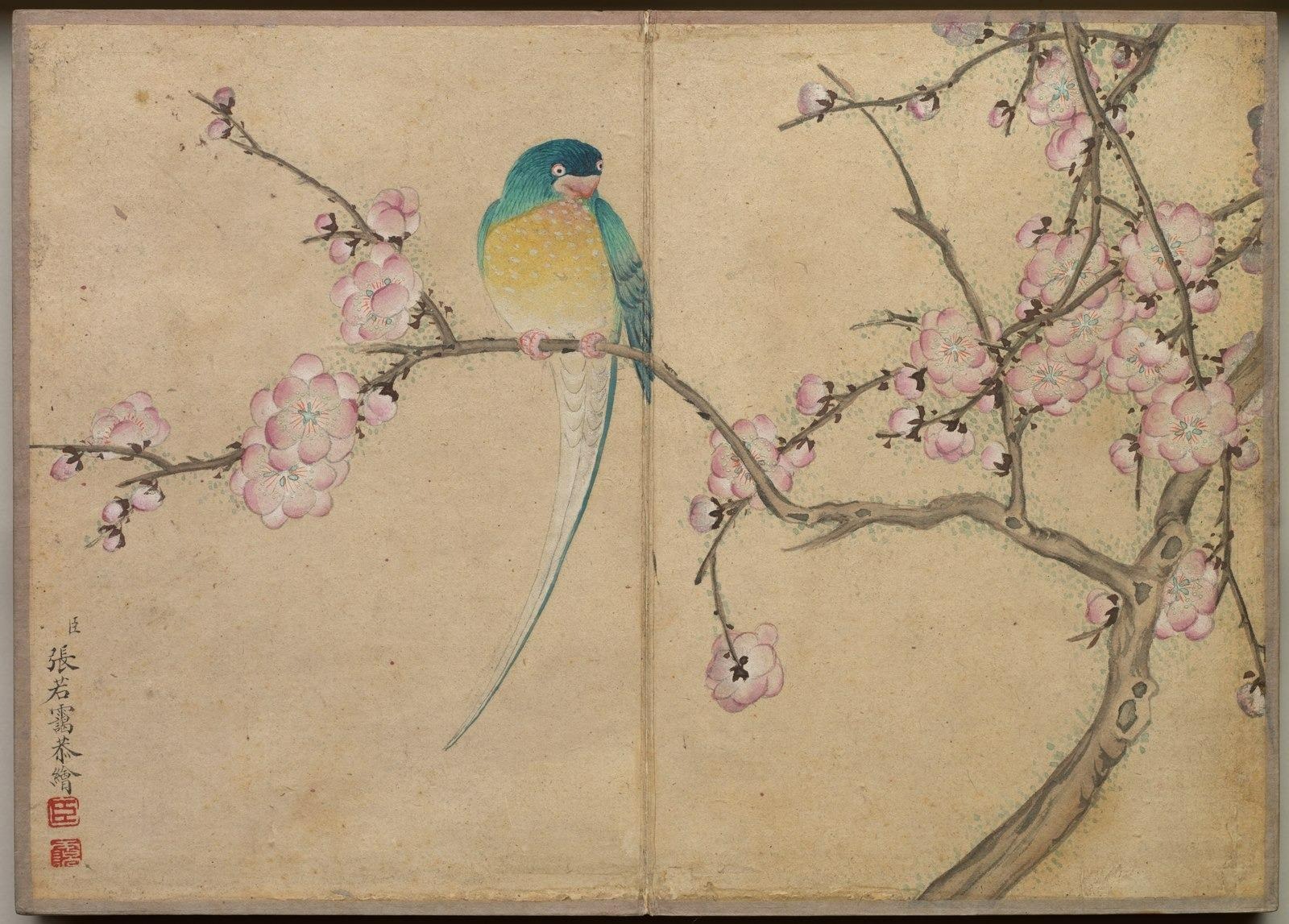
Plum blossoms bloom in the depths of winter, with delicate pink petals decorating a white canvass of snow, heralding hope and anticipation for the coming spring. The fortitude with which these blossoms withstand the challenging cold are perceived as a metaphor for the indomitable spirit of a righteous mind in the face of hardship and overcoming adversity with a pure heart.
The plum blossom is native to southern China and has been cultivated for over 3,000 years. During this time, it has been depicted in many art forms such as porcelain, woodwork, painting and textile; and its virtues have surely inspired the verses of many scholars:
“After others fall, alone they bloom, In a garden small, they splendidly loom.”
Verses from a poem by Lin Bu, Chinese poet during the Song Dynasty
The orchid (兰花 Lánhuā) – humility and modesty
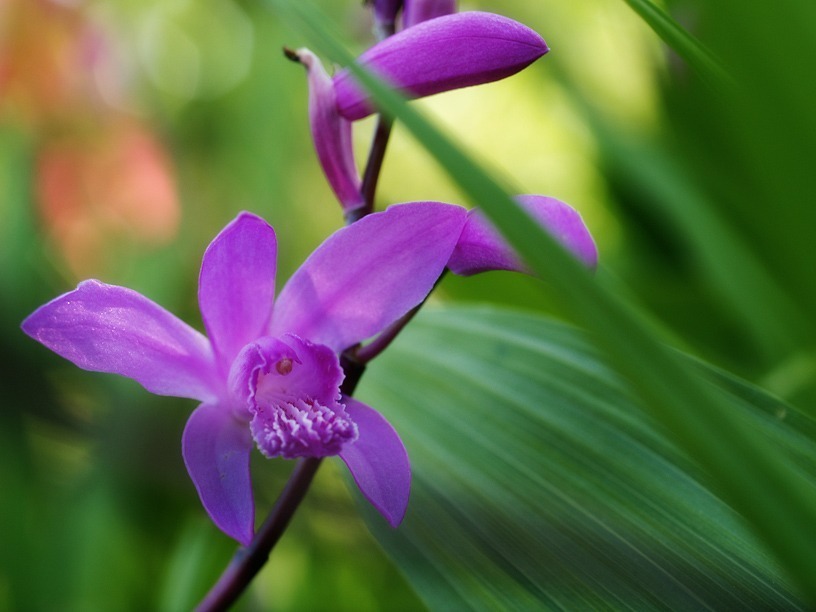
Success
You are now signed up for our newsletter
Success
Check your email to complete sign up
The orchid has captured the hearts of the Chinese since it began to be cultivated in China more than 2,000 years ago. With a refined appearance and delicate fragrance, this ornamental has long been associated with beauty and good taste.
Confucius was one of the first scholars to praise the orchid as a symbol of virtue. In his moral teachings, he explained that just as orchids bloom fragrant in deep forests where there is no one to admire them, a virtuous person holds fast to his moral principles even when there is no one watching. The orchid became an emblem of refined character and modesty.
Like the plum blossom, the orchid inspired many verses. The poet Qu Yuan, immortalized by the annual Dragon Boat Festival, extolled orchids as a symbol of nobility and holiness. Throughout his life, he cultivated many orchids in his garden and mentioned them in his poems:
“Such bounty I had of beauty within,
And to this was added fair countenance. I wore mantles of river rush and remote angelica,
Strung autumn orchids to hang from my sash.”
– Verses from Li Sao, an ancient poem written by the Chinese poet and politician Qu Yuan.
The bamboo (竹 Zhú) – righteousness and integrity
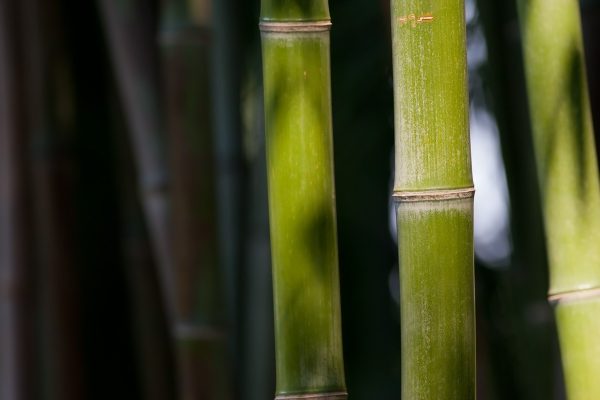
The spiritual value of bamboo lies in its ability to retain its vibrant green color throughout the seasons, and to keep its stalks upright under all conditions, particularly during storms that would break other hollow structures. These characteristics, according to the ancient Chinese, symbolize the virtues of righteousness and integrity that a gentleman should have.
A famous Chinese idiom refers to a legend about bamboo:
“With Bamboo in Mind To Hold Bamboo in Your Heart. (胸有成竹 xiōng yǒu chéng zhú).”
Wen Tong was a famous bamboo artist of the Song dynasty. To achieve his realistic style, he planted bamboo in his garden. Day after day and season after season, Wen carefully observed the plants as they grew, taking note of what their shoots, stems and leaves looked like throughout the year.
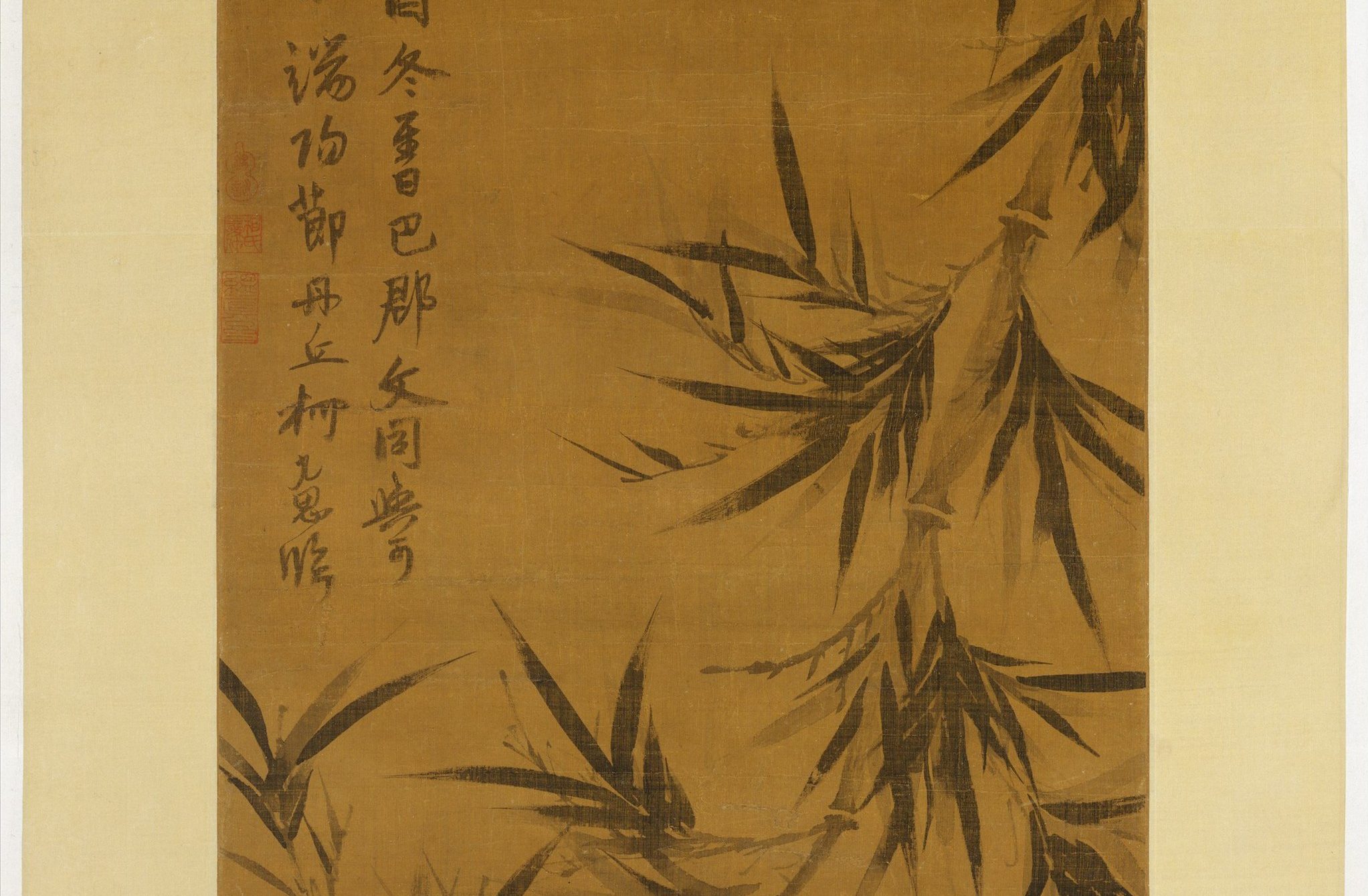
Over time, Wen became one of the best bamboo artists. He painted bamboo with unparalleled speed and without missing a brushstroke. It was also said that Wen could make two bamboo paintings simultaneously, using two brushes in one hand.
When asked about the secret of his skills, Wen said that it was enough to have a clear image of bamboo in his mind to make a good painting. With a clear picture of the result, the process became faster and easier. Since then, people have used the idiom 胸有成竹 to refer to a person who is clear about his goals.
The chrysanthemum (秋菊 Qiūjú) – caring little for worldly affairs
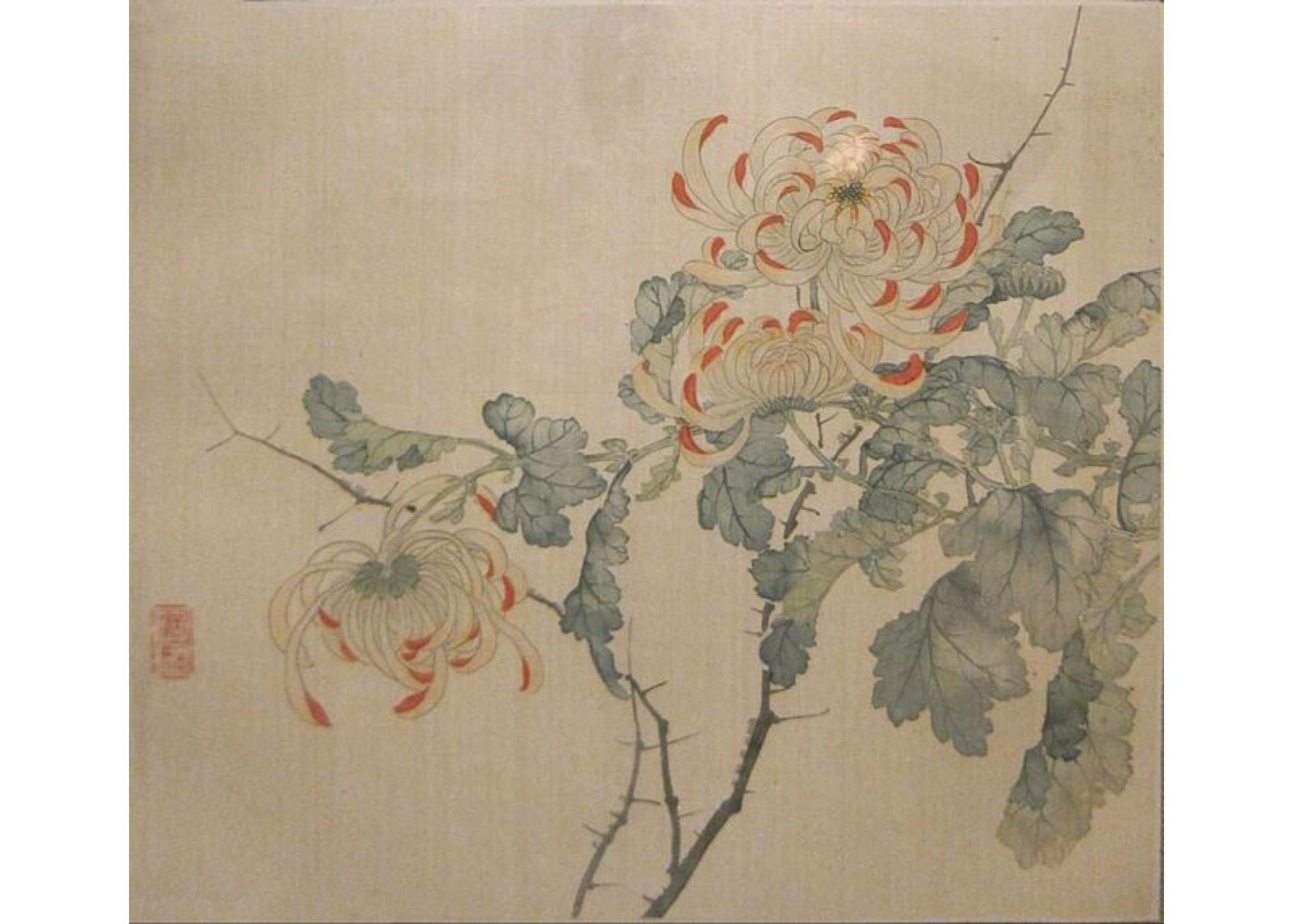
Known as the hermit of flowers, the chrysanthemum emerges early in spring, but does not begin to bloom until fall, when other flowers wither. The fact that it blooms when most other flowers have faded is believed to represent the calm mind of a gentleman who is indifferent to fame and fortune.
Even when it does bloom, its earthy fragrance is atypical, and often considered unpleasant. Clearly dancing to its own tune, the chrysanthemum symbolizes the characteristic of being free of worldly concerns, another timeless virtue of traditional Chinese culture.
Among the many scholars who admired the chrysanthemum, it is known that Tao Yuanming, poet and politician of the Jin dynasty, deeply cherished this flower. During his life, Tao had a special inclination for a secluded life, away from the hustle and bustle of the world. He emmersed himself in nature and devoted his time to the simple pleasures of life.
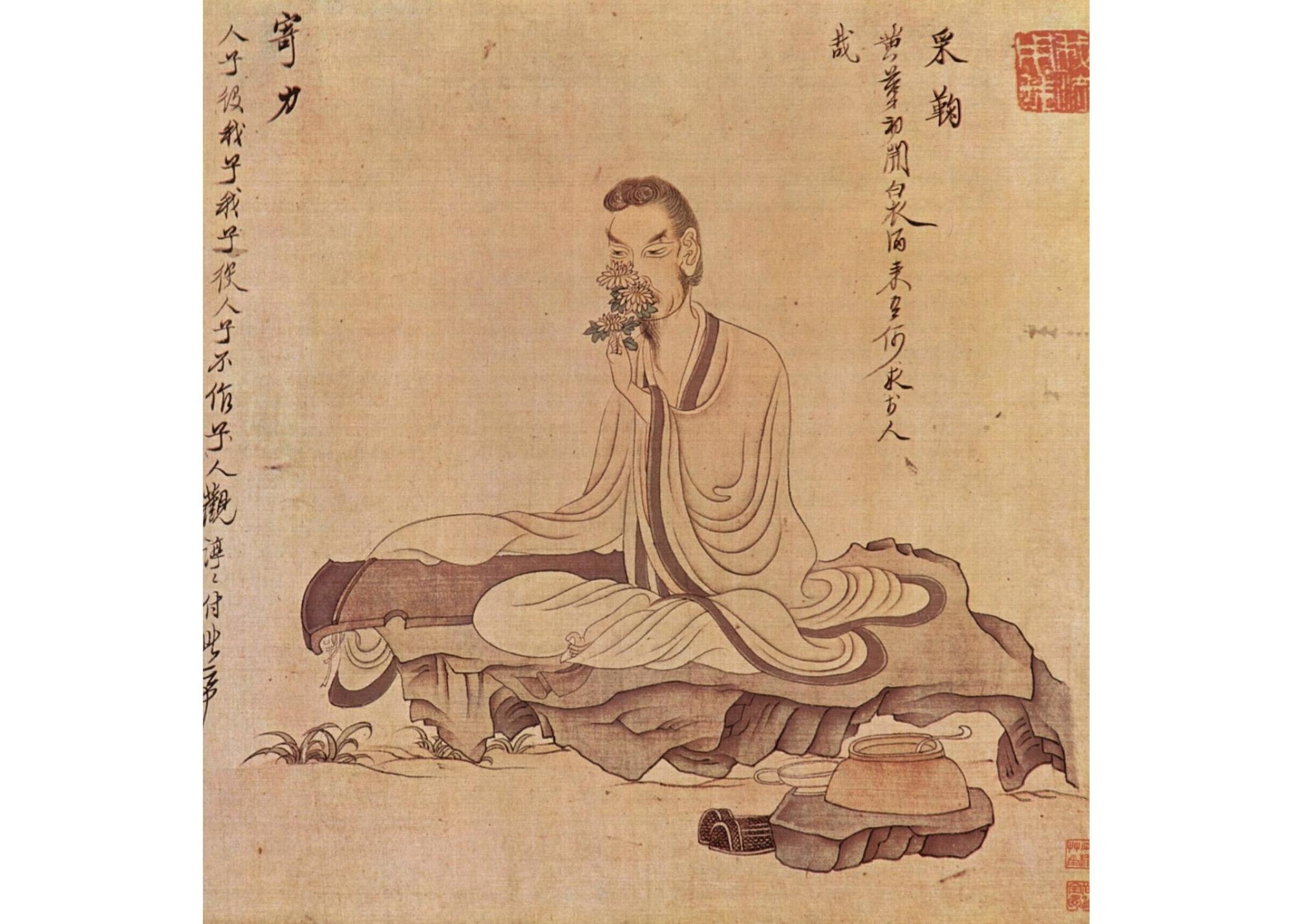
However, he was called to serve as a government official during a time of political unrest. Torn between duty and integrity, he resigned after a decade of service and returned to his quiet life in the countryside. The poem “Drinking Wine,” which he wrote after his retirement, mentions his hermit friend:
“While picking chrysanthemums beneath the Eastern fence,
my gaze upon the Southern mountain rests.”
– Verses from “饮酒” (Drinking Wine) by Tao Yuanming
Chrysanthemums, like the other three plants of virtue, are a popular motif in traditional Chinese arts such as ink painting, textiles, lacquerware, porcelain, wood carving and jade carving. So next time you appreciate a piece of fine Chinese art, see if you can catch a glimpse of any of these noble gentlemen!
